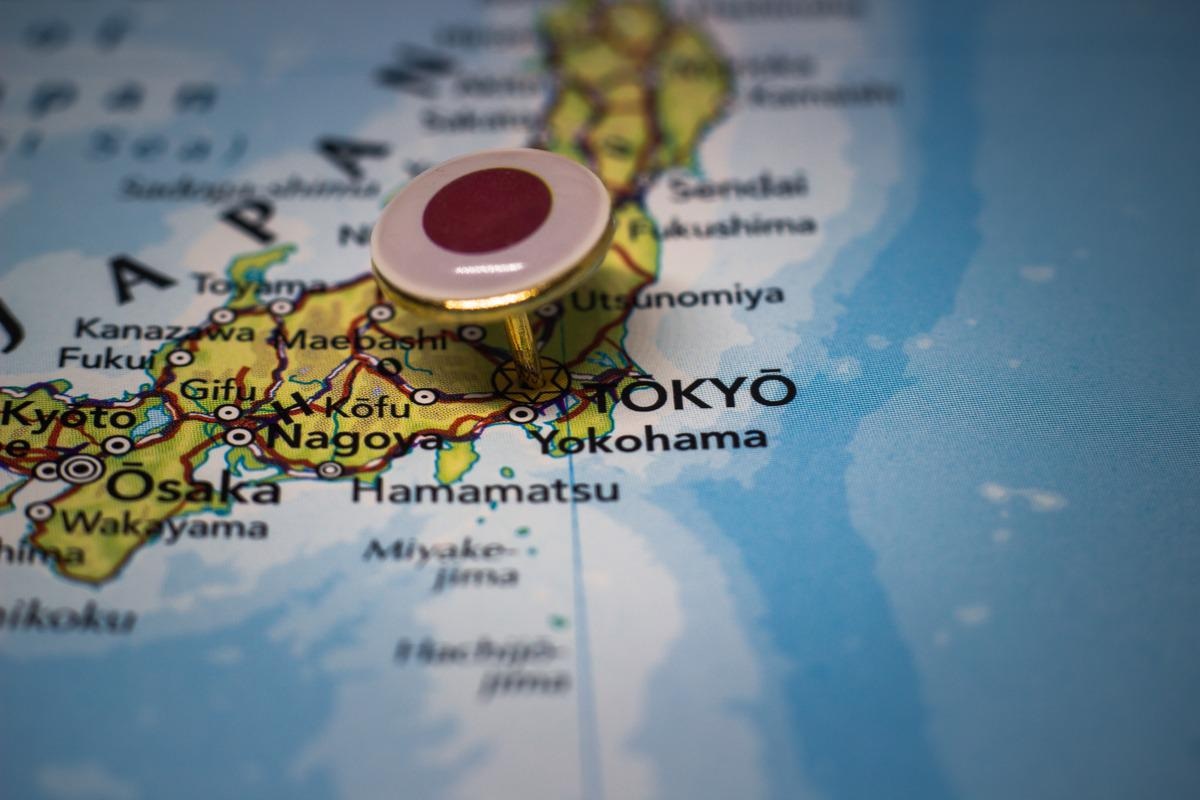The current publication of Ailment Outbreak News is an update to the earlier printed Ailment Outbreak Information of 29 May possibly and also delivers brief summaries of guidance, which includes on vaccination.
Outbreak at a glance
Since 13 Might 2022, and as of 2 June 2022, 780 laboratory verified instances of monkeypox have been noted to or determined by WHO from 27 Member States throughout four WHO areas that are not endemic for monkeypox virus. Epidemiological investigations are ongoing. Most reported situations so much have been offered by means of sexual health or other wellbeing companies in key or secondary well being treatment services and have associated primarily, but not completely, guys who have sexual intercourse with men (MSM).
When the West African clade of the virus has been identified from samples of scenarios so much, most verified circumstances with vacation record claimed journey to countries in Europe and North America, instead than West or Central Africa in which the monkeypox virus is endemic. The affirmation of monkeypox in persons who have not travelled to an endemic location is atypical, and even just one case of monkeypox in a non-endemic country is regarded as an outbreak. Even though most situations are not linked with vacation from endemic spots, Member States are also reporting modest figures of circumstances in tourists from Nigeria, as has been observed prior to.
The sudden and unpredicted look of monkeypox simultaneously in numerous non-endemic nations indicates that there could have been undetected transmission for some unidentified period of time followed by modern amplifier functions.
WHO assesses the danger at the worldwide degree as moderate considering this is the initial time that a lot of monkeypox scenarios and clusters are reported concurrently in non-endemic and endemic international locations in extensively disparate WHO geographical regions.
WHO proceeds to get updates on the problem in endemic international locations.
Description of the outbreak
As of 2 June 2022, 780 laboratory verified conditions have been notified to WHO below the Worldwide Well being Restrictions (IHR) or discovered by WHO from official public resources in 27 non-endemic countries in 4 WHO Areas. This signifies an improve of 523 laboratory verified conditions (+203{fe463f59fb70c5c01486843be1d66c13e664ed3ae921464fa884afebcc0ffe6c}) because the Ailment Outbreak News of 29 May possibly, when a complete of 257 scenarios ended up documented. As of 2 June 2022, there have been no deaths affiliated within the present monkeypox outbreak in non-endemic countries, having said that, scenarios and fatalities go on to be reported from endemic nations around the world (see Desk 2).
While investigations are ongoing, preliminary knowledge from polymerase chain response (PCR) assays indicate that the monkeypox virus strains detected in Europe and other non-endemic areas belong to the West African clade.
Determine 1 and Desk 1 clearly show the geographical distribution of monkeypox circumstances documented to or determined by WHO between 13 May to 2 June 2022 in non-endemic nations around the world. The greater part of instances (n=688 88{fe463f59fb70c5c01486843be1d66c13e664ed3ae921464fa884afebcc0ffe6c}), were being described from the WHO European Area (20 Nations). Confirmed instances have also been claimed from the Region of the Americas (n=80 10{fe463f59fb70c5c01486843be1d66c13e664ed3ae921464fa884afebcc0ffe6c}), Eastern Mediterranean Location (n=9 1{fe463f59fb70c5c01486843be1d66c13e664ed3ae921464fa884afebcc0ffe6c}) and Western Pacific Location (n=3 <1{fe463f59fb70c5c01486843be1d66c13e664ed3ae921464fa884afebcc0ffe6c}).
The case count fluctuates as more information becomes available daily and data is verified by WHO in accordance with the provisions of the IHR.
To date, the clinical presentation of confirmed cases has been variable. Many cases in this outbreak are not presenting with the classical clinical picture for monkeypox. In cases described thus far in this outbreak, common presenting symptoms include genital and peri-anal lesions, fever, swollen lymph nodes, and pain when swallowing. While oral sores remain a common feature in combination with fever and swollen lymph nodes, the local anogenital distribution of rash (with vesicular, pustular or ulcerated lesions) sometimes appears first without consistently spreading to other parts of the body. This initial presentation of a genital or peri-anal rash in many cases suggests close physical contact as the likely route of transmission during sexual contact. Some cases have also been described as having pustules appear before constitutional symptoms (e.g., fever) and having lesions at different stages of development, both of which are atypical of how monkeypox has presented historically. Apart from patients hospitalized for the purpose of isolation, few hospitalizations have been reported. Complications leading to hospitalization have included the need to provide adequate pain management and the need to treat secondary infections.
In addition to the cases reported from or identified in non-endemic countries, WHO continues to receive updates on the status of ongoing monkeypox outbreaks in endemic countries^[1]^ in the African region through established surveillance mechanisms (Integrated Disease Surveillance and Response). From January to 1 June 2022, 1408 suspected and 44 confirmed cases including 66 deaths were reported from seven endemic countries (Table 2).
^[1]^ Monkeypox endemic countries are: Cameroon, the Central African Republic, the Democratic Republic of the Congo, Gabon, Ghana (identified in animals only), Cote d’Ivoire, Liberia, Nigeria, the Republic of the Congo, and Sierra Leone. Benin and South Sudan have documented importations in the past. Countries currently reporting cases of the West African clade are Cameroon and Nigeria.
The situation is evolving and WHO expects that there will be more cases of monkeypox identified as the outbreak progresses and as surveillance expands in both endemic and non-endemic countries.
Public health response
WHO continues to support sharing of information about this outbreak of monkeypox. Clinical and public health incident response has been activated at WHO and in many Member States to coordinate comprehensive case finding, contact tracing, laboratory investigation, clinical management, isolation, and implementation of infection and prevention and control measures.
Genomic sequencing of viral deoxyribonucleic acid (DNA) of the monkeypox virus, where available, is being undertaken. Several European countries (Belgium, France, Germany, Israel, Italy, the Netherlands, Portugal, Slovenia, Spain, Switzerland and the United States of America) have published full-length or partial genome sequences of the monkeypox virus found in the current outbreak. While investigations are ongoing, preliminary data from PCR assays indicate that the monkeypox virus genes detected belong to the West African clade.
ACAM-2000 and MVA-BN vaccines are being deployed by some Member States to manage close contacts. Others may hold supplies of LC16 vaccines.
Interim guidance is being developed to support Member States with surveillance, laboratory diagnostics and testing, case investigation and contact tracing, clinical management, vaccines and immunization, and risk communication and community engagement.
WHO has updated its guidance on monkeypox outbreak response and published the following documents:
WHO interim guidance on the clinical management and infection prevention and control for monkeypox, and on vaccines and immunization for monkeypox, will be published shortly.
WHO risk assessment
Currently, the public health risk at the global level is assessed as moderate considering this is the first time that many monkeypox cases and clusters are reported concurrently in non-endemic and endemic countries in widely disparate WHO geographical areas.
Cases were initially and mainly identified amongst men self-identified as part of extended sexual networks. The sudden appearance and wide geographic scope of many cases that initially appeared to be sporadic cases indicate that extended human-to-human transmission was facilitated by frequent encounters between persons in close proximity and/or with physical contact. Some countries are reporting that new generations of cases are no longer appearing only among known contacts of previously confirmed cases, suggesting that chains of transmission are being missed through undetected circulation of the virus.
Additionally, as epidemiological and laboratory information are still limited, the actual number of cases is likely an underestimate. This may in part be due to the lack of early clinical recognition of an infection previously known to occur mostly in West and Central Africa, limited surveillance, and a lack of widely available diagnostics in some countries. Given the number of countries across several WHO regions reporting cases of monkeypox, it is highly likely that other countries will identify cases and there will be further spread of the virus.
Human-to-human transmission occurs through close proximity or direct physical contact (e.g., face-to-face, skin-to-skin, mouth-to-mouth, mouth-to-skin contact including during sex) with skin or mucous membranes that may have recognized or unrecognized infectious lesions such as mucocutaneous ulcers, respiratory droplets (and possibly short-range aerosols), or contact with contaminated materials (e.g., linens, bedding, electronics, clothing).
Although the current risk to human health and for the general public remains low, the public health risk could become high if this virus exploits the opportunity to establish itself in non-endemic countries as a widespread human pathogen. There is also a risk to health workers if they are not using adequate infection prevention and control (IPC) measures or wearing appropriate personal protective equipment (PPE) when necessary, to prevent transmission. Though not reported in this current outbreak, the risk of health care associated infections has been documented in the past in both endemic and non-endemic areas. There is the potential for increased health impact with wider dissemination in vulnerable groups, as the risk of severe disease and mortality is recognized to be higher among children and immunocompromised individuals. There is limited data among people living with HIV, but those who take antiretrovirals and have a robust immune system have not reported a more severe course those people living with HIV who are not on treatment or remain immunosuppressed may have a more severe course, as documented in the literature. Infection with monkeypox in pregnancy is poorly understood, although limited data suggest that infection may lead to adverse outcomes for the foetus.
To date, all cases identified in non-endemic countries whose samples were confirmed by PCR have been identified as being infected with the West African clade. There are two known clades of monkeypox, one endemic to West Africa (WA) and one to the Congo Basin (CB) region. The WA clade has in the past been associated with an overall lower mortality rate of <3{fe463f59fb70c5c01486843be1d66c13e664ed3ae921464fa884afebcc0ffe6c} while the CB clade appears to more frequently cause severe disease with a case fatality ratio (CFR) previously reported from 1-10{fe463f59fb70c5c01486843be1d66c13e664ed3ae921464fa884afebcc0ffe6c} both estimates are based on infections among a generally younger population in the African setting.
Vaccination against smallpox had been shown to be cross-protective against monkeypox. However, immunity from smallpox vaccination will be limited to persons under the age of 40 or 50 years since smallpox vaccination programmes ended following the eradication of smallpox the original (first generation) smallpox vaccines are no longer available to the general public. In addition, protection for those who were vaccinated may have waned over time.
Smallpox and monkeypox vaccines, where available, are being deployed in a limited number of countries to manage close contacts. While smallpox vaccines have been shown to be protective against monkeypox, there is also one vaccine approved for prevention of monkeypox. This vaccine is based on a strain of vaccinia virus (known generically as modified vaccinia Ankara Bavarian Nordic strain, or MVA-BN). This vaccine has been approved for prevention of monkeypox in Canada and the United States of America. In the European Union, this vaccine has been approved for prevention of smallpox. An antiviral to treat orthopoxviruses has been also recently approved in the United States of America and in the European Union. WHO has convened experts to review the latest data on smallpox and monkeypox vaccines, and to provide guidance on how and in what circumstances they should be used.
WHO advice
The advice provided hereafter by the WHO on actions required to respond to the multi-country monkeypox outbreak, is based on its technical work, and informed by consultations with the following existing WHO advisory bodies: the Strategic and Technical Advisory Group on Infectious Hazards (STAG-IH) the ad-hoc Strategic Advisory Group of Experts on Immunization (SAGE) working group on smallpox and monkeypox vaccines the Emergencies Social Science Technical Working Group the Advisory Committee on Variola Virus Research WHO Research & Development (R&D) Blueprint consultation: monkeypox research the Scientific Advisory Group for the Origins of Novel Pathogens (SAGO) as well as by the outcome of ad-hoc experts meetings.
All countries should be on the alert for signals related to people presenting with a rash that progresses in sequential stages — macules, papules, vesicles, pustules, scabs, at the same stage of development over all affected areas of the body — that may be associated with fever, enlarged lymph nodes, back pain, and muscle aches. During this current outbreak, many individuals are presenting with localized rash — peri-genital and/or peri-anal distribution associated with local, painful swollen lymph nodes. Some cases may have secondary bacterial infections and may have simultaneous sexually transmitted infections such as herpes simplex virus, syphilis or N. gonorrhoea. These individuals may present to various community and health care settings including but not limited to primary and secondary care, fever clinics, sexual health services, infectious disease units, obstetrics and gynaecology, emergency departments and dermatology clinics.
Increasing awareness among potentially affected communities, as well as health care providers and laboratory workers, is essential for identifying and preventing further cases and effective management of the current outbreak. Information should reach those who need it most during upcoming potentially amplifying large gatherings, and all efforts should be made to avoid unnecessary stigmatization of individuals and communities potentially affected by monkeypox.
Any individual meeting the definition for a suspected case should be offered testing. The decision to test should be based on both clinical and epidemiological factors, linked to an assessment of the likelihood of infection. Due to the range of conditions that cause skin rashes and because clinical presentation may more often be atypical in this outbreak, it can be challenging to differentiate monkeypox solely based on the clinical presentation.
Caring for patients with suspected or confirmed monkeypox requires early recognition through screening protocols adapted to local settings prompt isolation and rapid implementation of appropriate IPC measures (standard and transmission-based precautions) testing to confirm diagnosis symptomatic management of patients with mild or uncomplicated monkeypox and monitoring for and treatment of complications and life-threatening conditions such as progression of skin lesions, secondary infection of skin lesions, and rarely, severe dehydration, severe pneumonia or sepsis.
Infection prevention and control (IPC) measures (including supportive isolation of confirmed cases) should remain in place until lesions have crusted, scabs have fallen off and a fresh layer of skin has formed underneath.
WHO is closely monitoring the situation and supporting international coordination working with Member States and partners.
For WHO documents available publicly, see the Public Health Response section above. Key highlights from these documents and those under development are provided below for ease of reference.
***Surveillance and reporting ***
A global minimum data set has been created by WHO to facilitate capturing the key epidemiologic parameters on cases, for the purposes of global situational awareness and reporting. Member States are requested to submit the minimum data on all cases meeting the case definitions of probable or confirmed cases, through their IHR National Focal Points to their respective WHO Regional IHR Focal Points, as soon as the data are available. The data will be aggregated and shared publicly in aggregate form on a regular basis through WHO information products. A separate Case Investigation and Contact Tracing form for Member States’ own use is currently being finalized and will be shared as soon as available.
Laboratory testing and sample management
There is an increasing number of commercial PCR kits available on the market, some specific for monkeypox virus detection, some for orthopoxvirus detection. Almost all of them are for research use only, and none is independently validated. Various sets of primers and probes to set up in-house PCR protocols are mentioned in the scientific literature.
Risk communication and community engagement
Communicating monkeypox-related risks and engaging at-risk and affected communities, community leaders, civil society organizations, and health care providers, including those at sexual health clinics, on prevention, detection and care, is essential for preventing further secondary cases and effectively managing the current outbreak. Providing public health advice on how the disease transmits, its symptoms and preventive measures and targeting community engagement to the population groups who are most at-risk is critical to minimize spread.
Anyone who has direct contact, including but not limited to sexual contact, with an infected person can get monkeypox. Steps for self-protection include avoiding sexual contact with someone with a localized anogenital rash and limiting the number of sex partners avoiding close contact with someone who has symptoms consistent with possible monkeypox infection keeping hands clean with water and soap or alcohol-based gels and maintaining respiratory etiquette.
If a person develops symptoms such as a rash with blisters on face, hands, feet, eyes, mouth, and/or genitals and peri-anal areas fever swollen lymph nodes headaches muscle aches and fatigue they should contact their health care provider and get tested for monkeypox. If someone is suspected or confirmed as having monkeypox, they should isolate, avoid skin-to-skin and face-to-face contact with others and abstain from sex, including oral sex, until the scabs have fallen off. During this period, cases can get supportive treatment to ease symptoms. Anyone caring for a person sick with monkeypox should use appropriate personal protective measures as mentioned above.
Residents and travellers to monkeypox-endemic countries should avoid contact with sick mammals such as rodents, marsupials, non-human primates (dead or alive) that could harbour monkeypox virus and should refrain from eating or handling wild game (bush meat).
It is also important to prevent the spread of rumours and misinformation around monkeypox. It is important for public health authorities to systematically listen to and analyse public health concerns, including through social media, identify key questions and information voids, and build resilience to misinformation. Members of the public should be encouraged to get information only from verified and credible sources.
Infection, prevention and control in health care settings
Implementation of appropriate IPC measures is essential to mitigate and control the transmission of monkeypox in health care and community settings this includes the application of a hierarchy of controls (administrative, environmental and engineering controls) and the use of PPE to reduce the risk of exposure to monkeypox within health care settings. Health workers should apply standard precautions regularly, this includes conducting a risk assessment for every patient interaction, respiratory hygiene and cough etiquette, patient placement, PPE, aseptic technique, safe injections and sharps injury prevention, environmental cleaning and disinfection, proper handling of laundry and linen, decontamination and reprocessing of reusable patient care items and equipment, and waste management. WHO advises that IPC measures should be implemented for any suspected or confirmed case of monkeypox.
Clinical management and treatment
The majority of human monkeypox cases experience mild to moderate symptoms. Patients with monkeypox should be given symptomatic treatment for mild symptoms such as antipyretics for fever and analgesics for pain. Skin lesions should be kept clean. Adequate nutrition and rehydration are important. Patients should be counselled about signs and symptoms of complications which require urgent care.
Though uncommon, patients with monkeypox may develop severe and life-threatening complications. For example, the skin lesions are susceptible to bacterial skin and soft tissue infections. The lesions may be extremely itchy and if secondary bacterial infection occur from scratching it may requiring meticulous local wound care and, in some cases, antimicrobial therapy. Lesions in the mouth or the eye mucosa may also be present. Complications in endemic countries include secondary skin bacterial infections, dehydration, conjuctivitis, keratitis, pneumonia, sepsis or septic shock, and in rare cases encephalitis and death. It therefore follows that clinical care should focus on the management of clinical syndrome, maintenance of nutritional and hydration status, and prevention of complications and sequelae, as and when needed.
In patients with monkeypox, antivirals should be used under randomized clinical trials with collection of standardized clinical and patient outcome data to rapidly increase evidence generation on efficacy and safety. If this is not possible, antivirals may be used under expanded access protocols, such as Monitored Emergency Use of Unregistered and Investigational Interventions (MEURI).
Vaccines and immunization
There is a vaccine for monkeypox recently approved by some countries for which supplies are limited. Some countries may hold smallpox vaccine products which could be considered for use according to national guidance. Vaccine products may be available in limited quantities through national authorities, depending on the country.
Regardless of vaccine supply, mass vaccination of the population is not required nor recommended for monkeypox every effort must be made to control human-to-human spread of monkeypox through early case-finding and diagnosis, isolation and contact-tracing.
Post-exposure prophylaxis (PEP) is recommended for contacts of cases with an appropriate second- or third-generation smallpox or monkeypox vaccine, ideally within four days (and up to 14 days) of first exposure to prevent onset of disease.
Pre-exposure prophylaxis (PrEP) is recommended for health workers at high risk of exposure, laboratory personnel working with orthopoxviruses, clinical laboratory personnel performing diagnostic testing for monkeypox, and response team members as may be designated by public health authorities.
All decisions around immunization with smallpox or monkeypox vaccines should be based on an assessment of risks and benefits on a case-by-case basis, using shared clinical decision-making.
Implementation of vaccination should be accompanied by robust pharmacovigilance, and the conduct of vaccine effectiveness studies under clinical trial protocols is strongly encouraged.
One Health
Various wild mammals have been identified as susceptible to monkeypox virus in endemic areas. This includes rope squirrels, tree squirrels, Gambian pouched rats, dormice, non-human primates, among others. Some species are asymptomatic, especially species suspected of being reservoirs (rodents). Other species, such as monkeys and great apes, show skin rashes similar to those experienced by humans. Thus far, there are no reports of domestic animals being affected by the monkeypox virus. There are also no reports of human-to-animal transmission of monkeypox. However, there remains a hypothetical risk of human-to-animal transmission. Persons with monkeypox should ensure appropriate management of all waste (such as bandages) and potentially contaminated materials to prevent the disease from being transmitted from infected humans to susceptible animals at home (including pets), or to peri-domestic animals, especially rodents.
Large gatherings
Large gatherings may represent a conducive environment for the transmission of monkeypox virus if they entail close, prolonged and frequent interactions among people, which in turn could expose them to contact with lesions, body fluids, respiratory droplets and contaminated materials.
While postponing or cancelling gatherings in areas where monkeypox cases have been detected is not required as a default measure, precautionary measures can be considered as follows:
- Information on epidemiology, transmission and prevention of monkeypox should be shared with prospective attendees of large gatherings such events should be used as opportunities for information outreach and community engagement
- Although monkeypox and COVID-19 spread between people differently, some of the COVID-19 measures applied during social gatherings such as keeping a physical distance and practicing regular handwashing are also effective against the transmission of monkeypox virus.
- Close contact with someone who has signs and symptoms consistent with monkeypox should be avoided, including sexual contact.
- Attendance lists for participants in gatherings can be introduced, if applicable, to facilitate contact tracing in the event that a monkeypox case is identified.
- Staff responsible for dealing with attendees who fall ill at the event should be provided with information on how to manage people with signs and symptoms consistent with monkeypox.
As it is standard practice for large gatherings, and even more so during the COVID-19 pandemic, authorities and event organizers are invited to apply the WHO recommended risk-based approach to decision-making for mass gatherings, and tailor it to the large or small social events under consideration. In the context of the current outbreak, monkeypox-associated risks should be considered and factored in.
International travel
Based on available information at this time, WHO does not recommend that States Parties adopt any international travel-related measure for either incoming or outgoing travellers.
Any rash-like illness during travel or upon return should be immediately reported to a health professional, including information about all recent travel, sexual history and smallpox immunization history. Individuals who have been identified as contacts of monkeypox cases and, therefore, are subject to health monitoring, should avoid undertaking any travel, including international, until completion of their health monitoring period.
WHO urges all Member States, health authorities at all levels, clinicians, health and social sector partners, and academic, research and commercial partners to respond quickly to contain local spread and, by extension, the multi-country outbreak of monkeypox. Rapid action must be taken before the virus can be allowed to further establish itself as a human pathogen with efficient person-to-person transmission in both endemic and non-endemic contexts.
Further information
WHO Guidance and Public Health Recommendations
Resources
- WHO disease outbreak news: Monkeypox, all items related to multi-country outbreak. https://www.who.int/emergencies/emergency-events/item/2022-e000121
- WHO disease outbreak news: Monkeypox, all previous items including endemic countries and traveller-associated outbreaks. https://www.who.int/emergencies/emergency-events/item/monkeypox
- WHO AFRO Weekly Bulletin on Outbreaks and Other Emergencies, Epidemiological Week 21, 2022. https://apps.who.int/iris/bitstream/handle/10665/354552/OEW21-1622052022.pdf
- WHO AFRO Weekly Bulletin on Outbreaks and Other Emergencies, Week 22, 2022. https://apps.who.int/iris/bitstream/handle/10665/354782/OEW22-2329052022.pdf
- WHO factsheet on monkeypox, publishing date, 19 May 2022. http://www.who.int/news-room/fact-sheets/detail/monkeypox
- Health topics — Monkeypox. https://www.who.int/health-topics/monkeypox#tab=tab_1
- WHO monkeypox outbreak tool kit. https://www.who.int/docs/default-source/documents/emergencies/outbreak-toolkit/monkeypox-toolbox-20112019.pdf?sfvrsn=c849bd8b_2
- Open WHO. Online training module. Monkeypox: Introduction. 2020 English. https://openwho.org/courses/variole-du-singe-introduction
- Open WHO. Extended training. Monkeypox epidemiology, preparedness and response. 2021. English: https://openwho.org/courses/monkeypox-introduction Français: https://openwho.org/courses/variole-du-singe-int{fe463f59fb70c5c01486843be1d66c13e664ed3ae921464fa884afebcc0ffe6c}C3{fe463f59fb70c5c01486843be1d66c13e664ed3ae921464fa884afebcc0ffe6c}A9roduction
- WHO 5 moments for hand hygiene. https://www.who.int/campaigns/world-hand-hygiene-day
- WHO One health GLOBAL. https://www.who.int/health-topics/one-health#tab=tab_1
- World Organisation for Animal Health, founded as OIE: Monkeypox. https://www.oie.int/en/disease/monkeypox/
- Risk Communication and Community Engagement. Public health advice on the recent outbreak of monkeypox in the WHO European Region, 24 May 2022: https://www.euro.who.int/__data/assets/pdf_file/0004/538537/public-health-advice-monkeypox-eng.pdf
- Interim advice on Risk Communication and Community Engagement during the monkeypox outbreak in Europe, 2022 Joint report by WHO Regional office for Europe/ECDC 2 June 2022. https://www.euro.who.int/__data/assets/pdf_file/0009/539046/ECDC-WHO-interim-advice-RCCE-Monkeypox-2-06-2022-eng.pdf
- United Kingdom Health Security Agency. Monkeypox guidance. https://www.gov.uk/guidance/monkeypox
- Nigeria Centre for Disease Control. Monkeypox. https://ncdc.gov.ng/diseases/info/M and https://ncdc.gov.ng/diseases/sitreps/?cat=8&name=An{fe463f59fb70c5c01486843be1d66c13e664ed3ae921464fa884afebcc0ffe6c}20Update{fe463f59fb70c5c01486843be1d66c13e664ed3ae921464fa884afebcc0ffe6c}20of{fe463f59fb70c5c01486843be1d66c13e664ed3ae921464fa884afebcc0ffe6c}20Monkeypox{fe463f59fb70c5c01486843be1d66c13e664ed3ae921464fa884afebcc0ffe6c}20Outbreak{fe463f59fb70c5c01486843be1d66c13e664ed3ae921464fa884afebcc0ffe6c}20in{fe463f59fb70c5c01486843be1d66c13e664ed3ae921464fa884afebcc0ffe6c}20Nigeria
- Weekly epidemiological record (WER) no.11, 16 March 2018, Emergence of monkeypox in West Africa and Central Africa 1970-2017. http://apps.who.int/iris/bitstream/handle/10665/260497/WER9311.pdfjsessionid=7AB72F28D04CFE6CE24996192FC478FF?sequence=1
- First draft genome sequence of Monkeypox virus associated with the suspected multi-country outbreak, May 2022 (confirmed case in Portugal). https://virological.org/t/first-draft-genome-sequence-of-monkeypox-virus-associated-with-the-suspected-multi-country-outbreak-may-2022-confirmed-case-in-portugal/799
- Belgian case of monkeypox virus linked to outbreak in Portugal. https://virological.org/t/belgian-case-of-monkeypox-virus-linked-to-outbreak-in-portugal/801
- A monkeypox virus genome from a second Belgian case. https://virological.org/t/a-monkeypox-virus-genome-from-a-second-belgian-case/807
- First French draft genome sequence of monkeypox virus, May 2022. https://virological.org/t/first-french-draft-genome-sequence-of-monkeypox-virus-may-2022/819
- Illumina whole-genome sequence of Monkeypox virus in a patient travelling from the Canary Islands to France. https://virological.org/t/illumina-whole-genome-sequence-of-monkeypox-virus-in-a-patient-travelling-from-the-canary-islands-to-france/829/7
- First German genome sequence of Monkeypox virus associated to multi-country outbreak in May 2022. https://virological.org/t/first-german-genome-sequence-of-monkeypox-virus-associated-to-multi-country-outbreak-in-may-2022/812
- First Monkeypox genome sequence from Italy. https://virological.org/t/first-monkeypox-genome-sequence-from-italy/824
- First monkeypox genome sequence from the Netherlands. https://virological.org/t/first-monkeypox-genome-sequence-from-the-netherlands/821
- Spanish draft genome sequence of Monkeypox virus related to multi-country outbreak (May 2022). https://virological.org/t/spanish-draft-genome-sequence-of-monkeypox-virus-related-to-multi-country outbreak-may-2022/825
- First 2022 monkeypox outbreak genome sequences from Slovenia. https://virological.org/t/first-2022-monkeypox-outbreak-genome-sequences-from-slovenia/841
- First Israeli whole genome sequence of monkeypox virus associated with the May 2022 multi-country outbreak. https://virological.org/t/first-israeli-whole-genome-sequence-of-monkeypox-virus-associated-with-the-may-2022-multi-country-outbreak/843
- Initial observations about putative APOBEC3 deaminase editing driving short-term evolution of MONKEYPOXV since 2017, published on 30 May 2022. https://virological.org/t/initial-observations-about-putative-apobec3-deaminase-editing-driving-short-term-evolution-of-monkeypoxv-since-2017/830
- Multicolour, multiplex real-time PCR assay for the detection of human-pathogenic poxviruses. 10.1016/j.mcp.2009.10.008
- Real-time PCR assays for the specific detection of monkeypox virus West African and Congo Basin strain DNA. 10.1016/j.jviromet.2010.07.012
- Species-specific differentiation of variola, monkeypox, and varicella-zoster viruses by multiplex real-time PCR assay.10.1016/j.jviromet.2016.07.024
- Global.health data on monkeypox: Monkeypox_Public_www.global.health – Google Sheets
- BNONEWS- Monkeypox tracker: https://bnonews.com/monkeypox/
**Citable reference: **World Health Organization (4 June 2022). Disease Outbreak News Multi-country monkeypox outbreak in non-endemic countries: Update. Available at: https://www.who.int/emergencies/disease-outbreak-news/item/2022-DON390








